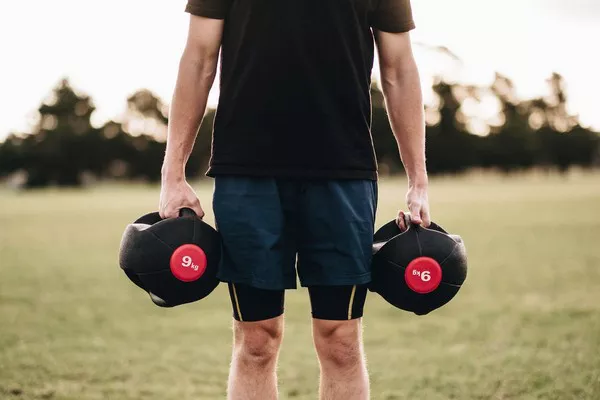When it comes to building a well-rounded fitness routine, one of the most effective strategies is incorporating both cardiovascular exercise (cardio) and weight training (strength training). While cardio can help improve your endurance and burn fat, weights are crucial for building muscle mass and increasing strength. However, finding the right balance between the two can be challenging for many fitness enthusiasts. The key to maximizing the benefits of both cardio and weight training is alternating them in a way that prevents overtraining and allows adequate recovery. In this article, we will explore how to alternate cardio and weights effectively, optimize your workouts, and achieve your fitness goals.
Why Alternating Cardio and Weights Matters
Before diving into the best ways to alternate cardio and weights, it’s essential to understand why this balance is important. Both types of exercise serve different purposes but complement each other. Here’s a breakdown of the benefits:
Cardio Benefits
Fat Loss: Cardio exercises like running, cycling, or swimming are highly effective at burning calories, which helps you lose fat when combined with proper nutrition.
Heart Health: Regular cardiovascular exercise improves the efficiency of your heart, lowers blood pressure, and boosts circulation.
Endurance: Cardio increases your stamina, allowing you to sustain physical activity for longer periods.
Weight Training Benefits
Muscle Growth: Weight training promotes hypertrophy (muscle growth), which is vital for enhancing strength and improving body composition.
Metabolic Boost: The more muscle you have, the more calories your body burns at rest. This is because muscle tissue requires more energy to maintain than fat tissue.
Functional Strength: Strength training improves bone density, joint function, and posture, leading to better overall physical health.
The challenge lies in combining these benefits without compromising your progress in one area over the other. Alternating cardio and weight training ensures that you receive the full spectrum of benefits from both, while preventing burnout or injury.
How to Alternate Cardio and Weight Training
The primary challenge when alternating cardio and weight training is knowing how often to perform each type of exercise, in what order, and how to structure your workouts. Below, we will discuss several principles to guide your approach.
Understand Your Fitness Goals
Your goals will significantly influence how you structure your workouts. Are you aiming to lose fat, build muscle, or improve overall fitness? Here’s how different goals might affect your workout schedule:
Fat Loss: If fat loss is your primary goal, you may want to prioritize cardio with a combination of moderate to intense weight training. Cardio will help you burn calories, while strength training will help preserve muscle mass.
Muscle Building: If you want to build muscle, weight training should take precedence, and cardio should be used sparingly. Too much cardio can interfere with muscle growth by hindering recovery and burning valuable calories needed for muscle repair.
General Fitness: If you are seeking general fitness and well-being, an equal balance between cardio and weight training can be effective. This approach will improve your cardiovascular health, endurance, and muscle strength without overly emphasizing one over the other.
2. Choose the Right Split
The way you structure your weekly workout plan is crucial for achieving your goals. One of the most effective ways to alternate cardio and weights is by organizing them into different workout splits. Below are some popular options for structuring your week.
Option 1: Cardio Before Weights
This approach involves starting your workout with a cardio session, followed by a weight training routine. It’s beneficial for those who are aiming to improve cardiovascular fitness or burn fat. Performing cardio first will deplete your glycogen stores, leaving less energy for your strength training. Here’s how a typical workout might look:
Warm-up: 5–10 minutes of light cardio to increase heart rate.
Cardio: 20–30 minutes of moderate to intense cardio (running, cycling, swimming, etc.).
Strength Training: Focus on full-body or specific muscle group workouts with 3–4 sets per exercise.
Option 2: Weights Before Cardio
Alternatively, you can start your workout with strength training and follow it up with cardio. This is ideal for individuals looking to maximize muscle growth while still benefiting from the fat-burning advantages of cardio. Strength training requires a lot of energy, so it’s best to perform this first while you’re still fresh. The structure of the workout would be:
Warm-up: 5–10 minutes of light cardio to activate your muscles and prepare your body.
Strength Training: Perform 3–4 sets of weight exercises targeting specific muscle groups.
Cardio: After completing weight training, finish with 20–30 minutes of cardio (HIIT, steady-state, or low-intensity).
Option 3: Cardio and Weight Training on Separate Days
For many fitness enthusiasts, alternating between cardio and weight training on different days provides a more focused approach. This approach allows you to dedicate each session to either one form of exercise, maximizing your performance in both. A sample weekly schedule could look like:
Monday: Weight Training (Full-body or Upper Body)
Tuesday: Cardio (HIIT or Moderate Intensity)
Wednesday: Rest or Active Recovery (Yoga, Walking)
Thursday: Weight Training (Lower Body)
Friday: Cardio (Low-Intensity Steady-State)
Saturday: Full-body Strength Training
Sunday: Rest or Light Activity
This option provides ample recovery for each muscle group while still integrating cardio into the routine.
3. Manage Your Intensity
When alternating cardio and weights, intensity management is key to preventing overtraining and allowing for recovery. Here are some tips:
Vary Intensity: Not every cardio session or weight training workout needs to be intense. Mixing moderate and high-intensity sessions throughout the week will keep your body from getting overstressed.
Listen to Your Body: If you feel excessively fatigued or sore, consider adjusting the intensity or switching to a recovery day.
Incorporate Active Recovery: Low-intensity activities like walking or stretching can help promote recovery between high-intensity workouts.
4. Recovery and Rest Days
Recovery is crucial for maximizing muscle growth and performance in both cardio and weight training. Be sure to include adequate rest days in your schedule to allow your body time to repair and grow stronger. If you’re alternating between intense cardio and weight lifting, you should aim for at least one to two full rest days each week, depending on your fitness level.
Sample Weekly Routine for Alternating Cardio and Weights
Here’s a sample weekly workout schedule that alternates between cardio and weight training:
Day 1 – Weight Training (Upper Body)
Focus on exercises like bench press, dumbbell rows, and shoulder press, with 3-4 sets per exercise.
Day 2 – Cardio (HIIT or Moderate Intensity)
Engage in high-intensity interval training (HIIT) or steady-state cardio like running or cycling.
Day 3 – Weight Training (Lower Body)
Perform exercises such as squats, lunges, and deadlifts, ensuring to work all major lower body muscles.
Day 4 – Active Recovery or Rest
Engage in low-intensity activities like walking, yoga, or swimming for muscle relaxation and recovery.
Day 5 – Cardio (Low-Intensity Steady-State)
Go for a long walk or light jog, focusing on endurance rather than intensity.
Day 6 – Weight Training (Full Body)
Perform a full-body workout that targets all muscle groups, such as deadlifts, squats, push-ups, and pull-ups.
Day 7 – Rest or Light Activity
This can be a complete rest day or a light activity like stretching or foam rolling.
Conclusion
Alternating between cardio and weight training is an effective way to develop a balanced fitness routine that enhances both endurance and muscle strength. By structuring your workout schedule around your fitness goals, managing intensity, and prioritizing recovery, you can optimize your performance and avoid overtraining. Whether you choose to combine both in the same workout or separate them across different days, alternating cardio and weights will ensure you achieve well-rounded fitness and reach your desired health outcomes. Always listen to your body, stay consistent, and adjust your routine as needed to keep progressing toward your goals.
Related Topics

































